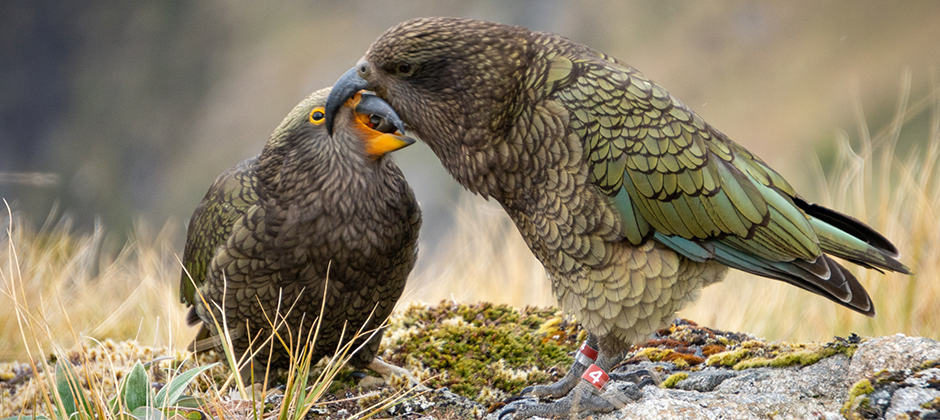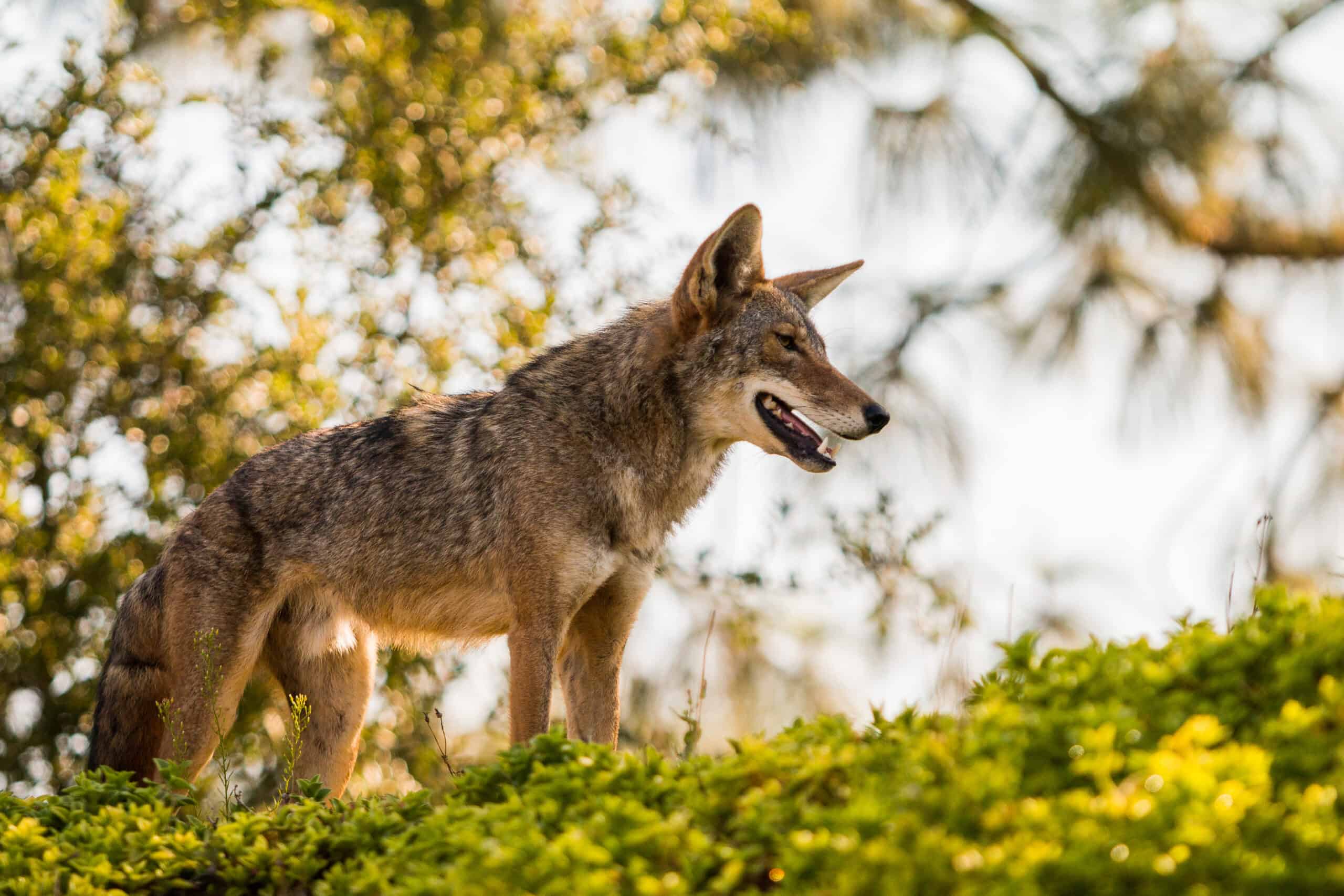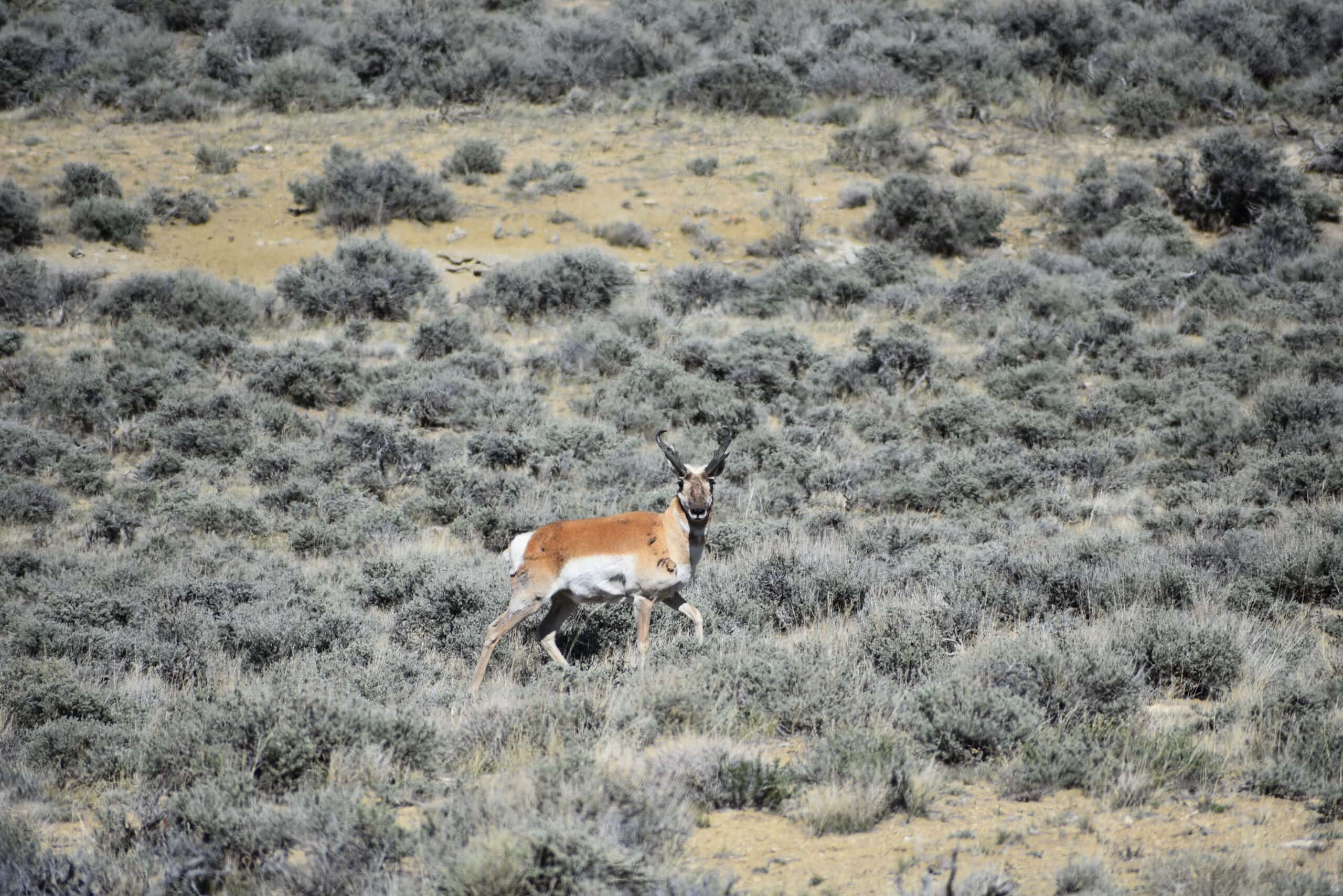Share this article
JWM: Training keas not to pick their poison
Curiosity may sometimes kill the kea in New Zealand, but researchers are hoping memory retention may keep them away from poisoned baits.
Kea (Nestor notabilis), a parrot species, were once found in much greater numbers in New Zealand, where they are endemic. The Indigenous Maori people have always treasured the birds. Historically, they harvested kea for food. “They have an interest in seeing kea protected and increased,” McLean said.
But the birds are intelligent and inquisitive—traits that got them into trouble in the past with European-descended New Zealanders. Kea destroyed property, pecked away at roofs on people’s homes, and sometimes even stole shoes. They damaged cars, and a parrot even occasionally killed a sheep. The New Zealand government sponsored a bounty for killing the parrots from 1867 to 1970, leading to a loss of roughly 150,000 over a century. This persecution was one of the main reasons the species ended up on the endangered list in New Zealand as well as the International Union for Conservation of Nature’s Red List.
Human perceptions of the birds have changed from seeing them as a pest in New Zealand to being curious about them—many people there have stories about personal interactions with the birds, which probably aren’t anywhere near as shy as they should be.
“People are quite fond of them,” said Lydia McLean, a PhD student at the University of Canterbury in New Zealand.
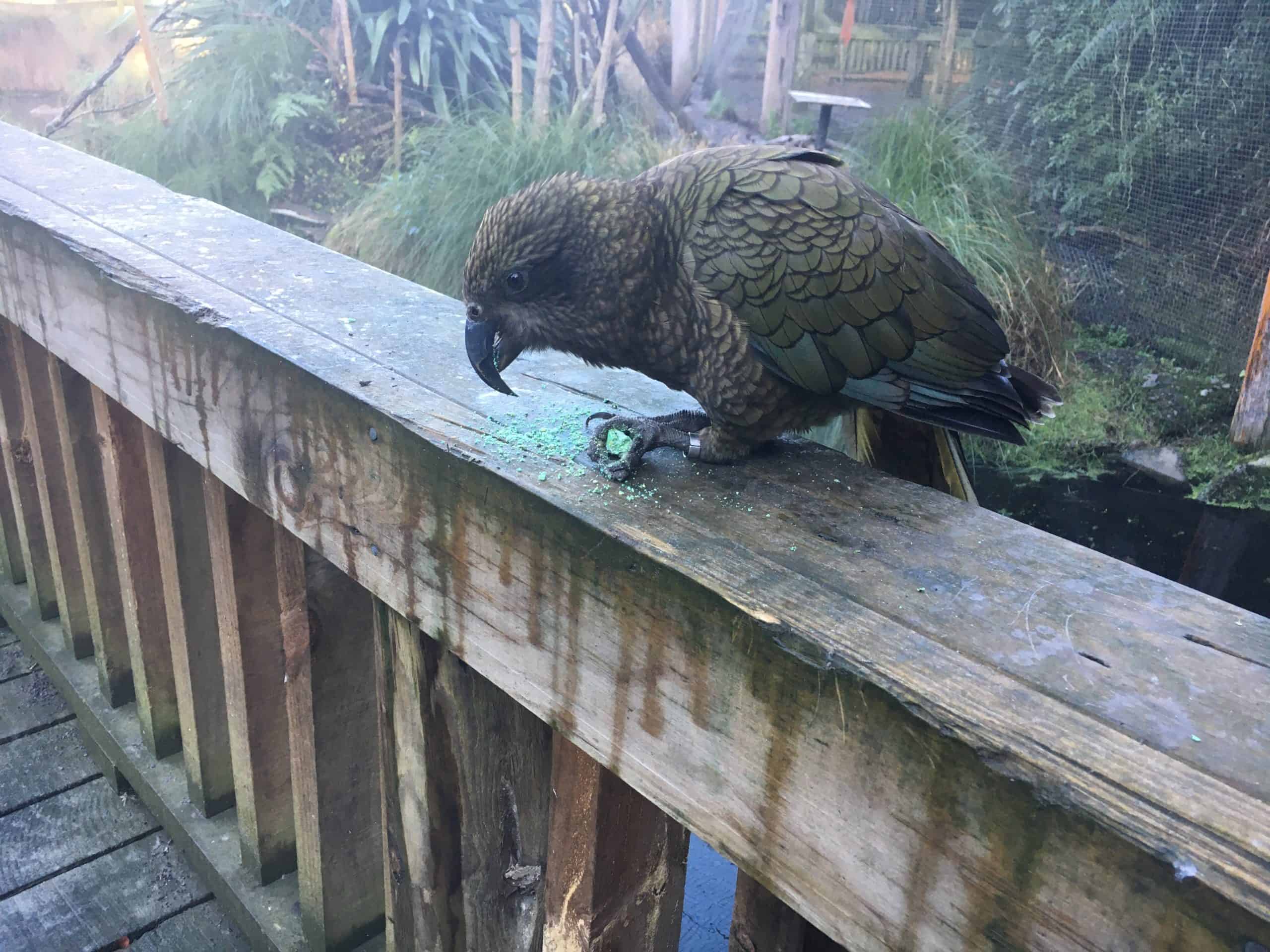
A kea with a bait used in the recent study testing how long the birds were repelled by the material. Credit: Lydia McLean
But even as the persecution from humans may have changed, the birds still suffer from the threats of invasive predators like feral cats (Felis catus), stoats (Mustela erminea), black rat (Rattus rattus), Polynesian rats (R. exulans), Norway rats (R. norvegicus) and brushtail possums (Trichosurus vulpecula) introduced from Australia. Many of these predators eat and destroy the ground nests the birds use, which evolved in the absence of these types of predators.
“We have a lot of bird species that have no defenses to any kind of mammals,” said McLean, who also works with the Kea Conservation Trust. After these mammal species arrived in New Zealand, intentionally or not, “they completely smashed the native species.”
To protect native ecosystems, wildlife managers in New Zealand work on various programs to trap these invasive mammals. In rugged areas where traps can’t be easily checked, they drop poison bait pellets to control the population of stoats, cats and other mesopredators.
“It feels wrong to a lot of people to be dropping poison out of helicopters,” McLean said. “But a lot of science has shown that it’s the only realistic defense against these predators.”
The trouble is that inquisitive kea will eat the poison as well. The poison can kill a number of kea in an operation, though it isn’t enough to negate the larger benefit of removing these predators from the landscape. Yet some don’t support the use of poison since it puts kea in danger, too.
Researchers looking for ways to limit the negative impact of poison on kea wanted to see whether they could use the birds’ own curiosity in their favor. In trials with captive birds, they placed anthraquinone, a kind of bird repellant, inside baits that appeared the same as the ones they poisoned in the wild. They gave these to captive birds in a zoo in Christchurch, as detailed in a study published recently in the Journal of Wildlife Management.
After administering the bait to the birds initially, McLean and her colleagues revisited the same birds and tried to feed them pellets that looked the same but didn’t contain repellent after three days, five weeks, three months, six months and a year.
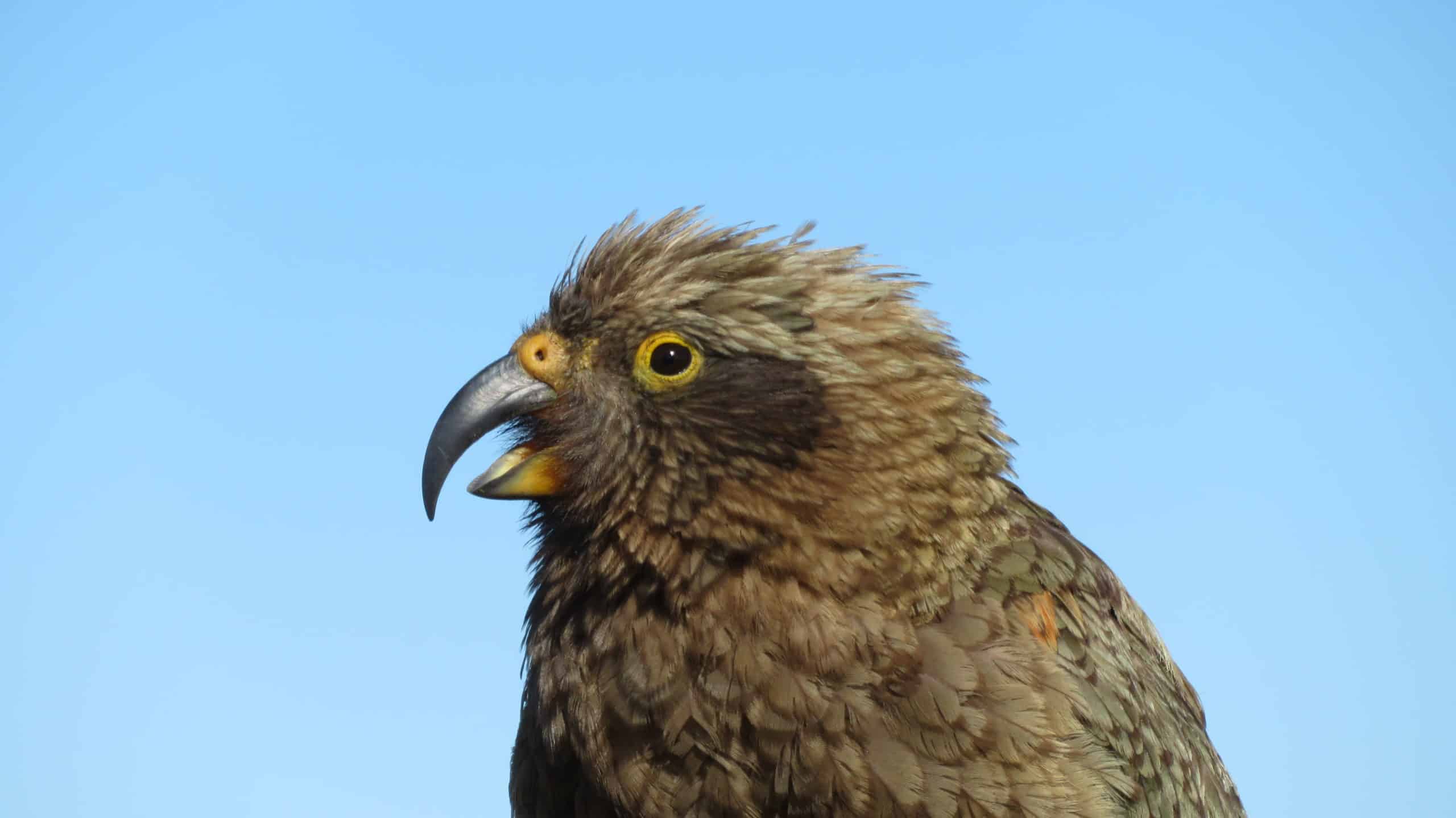
New Zealand and the IUCN considers kea endangered. Credit: Lydia McLean
When the birds saw the bait, they would retreat and ignore the researchers. “Some of the birds would take the baits and, rather dramatically, throw them away,” she said.
That was a good sign, since in captivity, McLean said the birds are usually bored and will come right up to people that enter their enclosures, landing on their shoes or shoulders.
The researchers found that the parrots remembered the bad taste for about 10 months, on average, at which point they began to eat the bait again. It’s possible they would have remembered longer as well if the researchers hadn’t tried giving them baits without repellents at so many intervals.
This finding is positive, McLean said. Wildlife managers would need to administer new poison pellets and bait every year or so anyway to teach each new generations of kea to avoid them, so the fact that they remember for a year is about as much as wildlife managers could wish for. “It’s a step of progress,” she said.
The project to use this repellent is ongoing—the repellent-laced baits would have to be administered before the poison is dropped in a dispenser that only the kea could access or else the wildlife managers might inadvertently teach the possums and rats to avoid the poison as well.
But the new research reveals a pathway toward a poison tactic more focused on the target invasive species. Hopefully, McLean said, more Maori communities will support the treatment on their land if this technique shows success.
This article features research that was published in a TWS peer-reviewed journal. Individual online access to all TWS journal articles is a benefit of membership. Join TWS now to read the latest in wildlife research.
Header Image: Kea have good cognition and memories. Credit: Penzy Dinsdale



